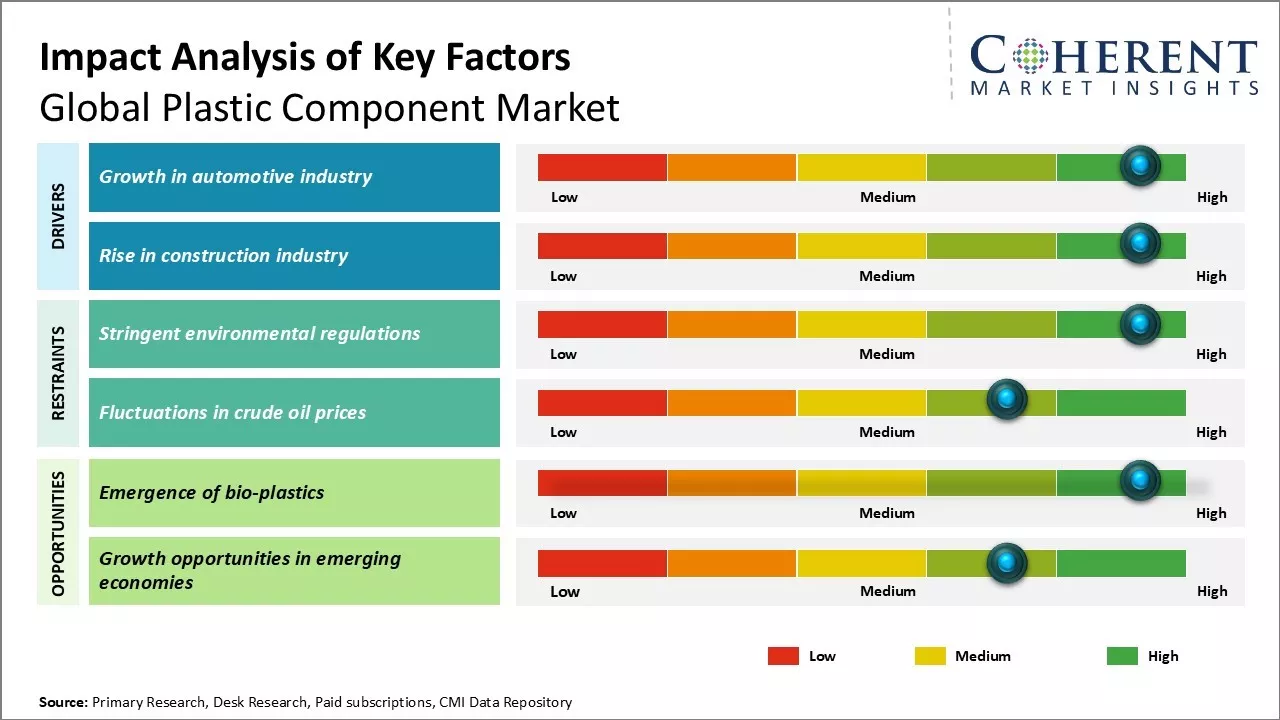The global plastic component market is estimated to be valued at USD 554.07 billion in 2025 and is expected to reach USD 861.58 billion by 2032, exhibiting a compound annual growth rate (CAGR) of 6.5% from 2025 to 2032.

To learn more about this report, Request sample copy
There is growing demand for plastic components from various end-use industries such as automotive, packaging, electronic, and medical devices. The light weight and durability properties of plastic make it an ideal material for manufacturing components. The increasing use of specialty plastics such as engineering plastics that are heat and chemical resistant is further driving the demand. Rising environmental concerns and stringent regulations regarding fuel efficiency are propelling automakers to manufacture lightweight vehicles using plastic components. Additionally, the demand for plastic components is expected to increase with growing investments in the medical devices sector.
Market Driver - Growth in automotive industry
The automotive industry has experienced strong growth in recent years, particularly in developing economies across Asia Pacific and Latin America. As vehicle ownership rates continue to increase in these emerging markets, the demand for plastics in automotive applications has risen substantially. Plastics are increasingly being used to manufacture both the interior and exterior components of modern vehicles due to their light weight and ability to be molded into complex designs. Things like door panels, dashboards, bumpers, trims, and other non-structural parts are being produced using engineering-grade thermoplastics like polypropylene and nylon.
The shift towards smaller and more fuel-efficient vehicles has also boosted plastic consumption in the automotive sector. Carmakers are focusing on reducing vehicle weight through the use of lightweight materials to maximize fuel economy and meet stringent emission standards. Plastic components can help reduce weight by up to 30% compared to traditional steel parts. Moreover, automakers desire enhanced design flexibility which plastics beautifully fulfill. The aesthetics and functionality of vehicle cabins are being improved through innovative applications of plastic composites. All these factors have encouraged OEMs around the world to incorporate more plastic content in their new vehicle models.
Electric vehicles in particular rely extensively on plastics owing to their higher part count compared to diesel or gasoline counterparts. Requirements for enhanced design, ease of manufacturing, and superior insulation properties make plastics an ideal material for EV components such as battery casings, connectors, sensors, and electronic modules. The sustained policy support for eco-friendly mobility solutions bodes well for plastic demand emanating from the proliferating global EV industry.
Joining thousands of companies around the world committed to making the Excellent Business Solutions.
View All Our Clients